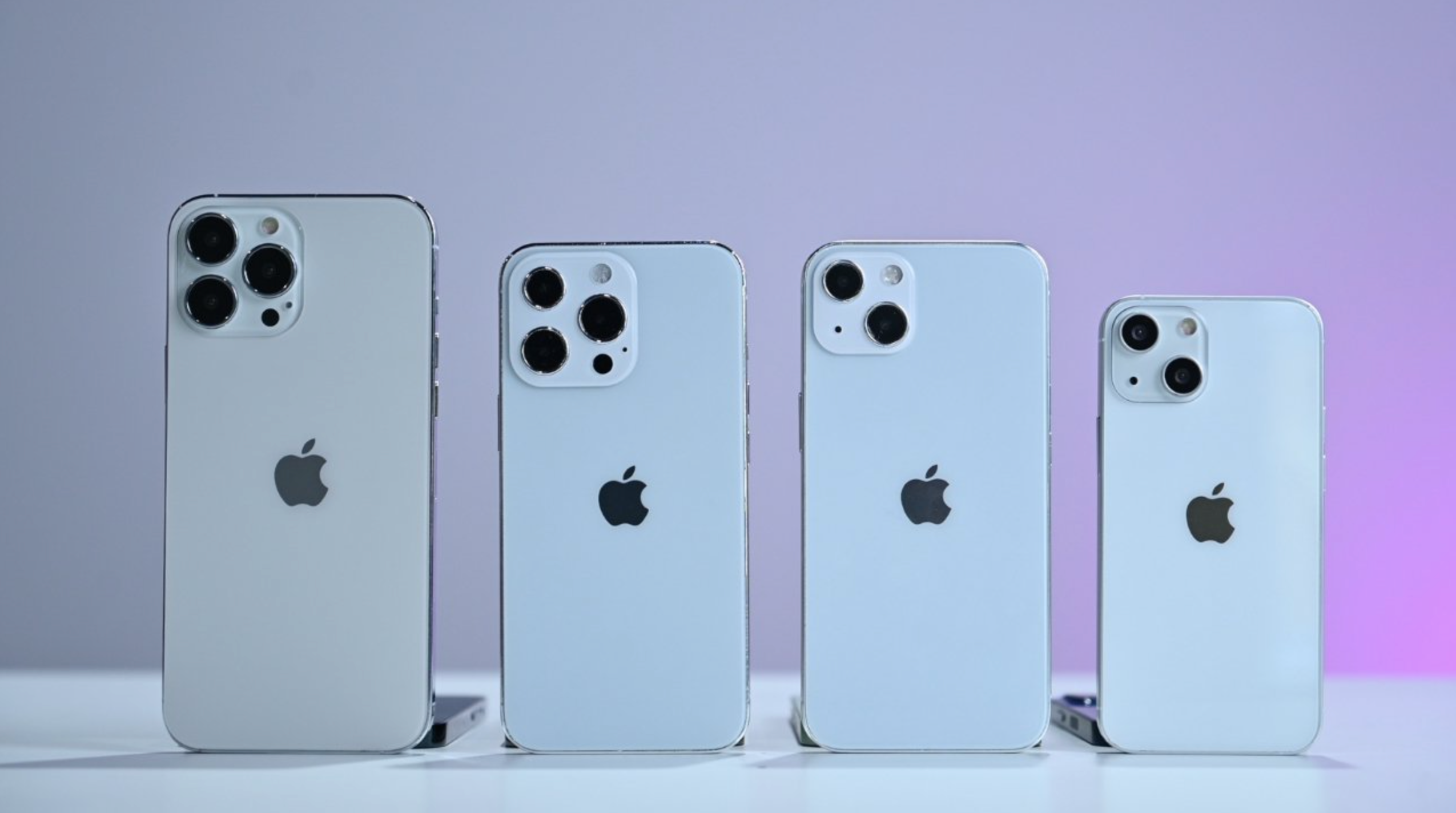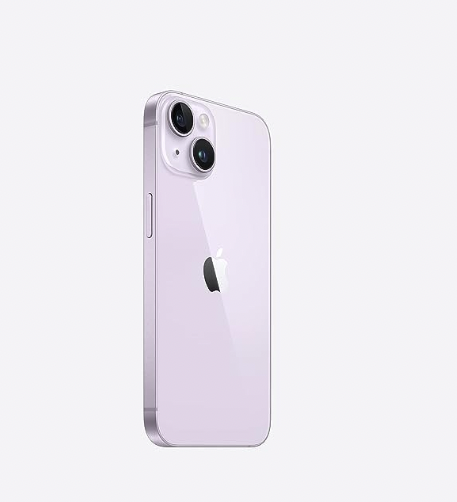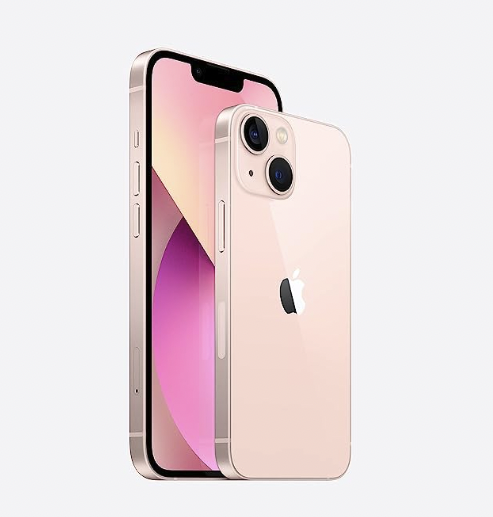We’re no longer in a world where the so-called best iPhone is the one available.
The different models and variations have stacked up.
There are various models that are best for different people, depending on the needs of the individual, whether that’s features, storage capacity, economics, or something else.
Apple doesn’t make as many phones as some companies, and they’re all of great quality, so choosing the best iPhone isn’t always easy.
And to stack more on the consumer’s plate, the iPhone 13/14/15 is available.
It looks like the lineup will include the:
- iPhone 13/14/15
- iPhone 13/14/15 Pro
- iPhone 13/14/15 Pro Max, and
- iPhone mini (no longer available with new models)
It also looks like we’ll have upgrades with respect to:
- battery
- camera
- speed
- colors
Older models will remain a viable option for quite a while, as Apple will keep supporting older iPhones. So the number of iPhones to choose from will keep getting larger and the overall menu more complex.
The iPhone 12 is available as:
- the standard iPhone 12
- the smaller iPhone 12 mini
- premium iPhone 12 Pro
- massive iPhone 12 Pro Max, and
For those looking for the more affordable options, there’s the smaller iPhone SE (2020) as well as older iPhones including the iPhone 11 series.
Apple still sells these and a number of discontinued models, such as the iPhone 8, that can still be found elsewhere.
We’ve ranked every model that’s still available from Apple or among third parties.
You’ll find the key points you need to know about each phone including:
- a full specs list
- an overview of it, and
- the main pros and cons
Of course, there are other options outside the Apple iPhone if none of these look to be the best overall options for your needs.
Table of Contents
iPhone 15
- Display: The iPhone 15 has a 6.1-inch display with 2352 x 1172 pixels. It also has a Dynamic Island display cutout instead of a notch.
- Camera: The iPhone 15 has a 48MP camera. The primary camera is 12MP + 12MP.
- Chipset: The iPhone 15 has a 4nm Apple A16 chipset.
- Battery: The iPhone 15 has a battery that can last for 20 hours of video playback and 80 hours of audio playback.
- Charging port: The iPhone 15 uses a USB-C port instead of Apple’s exclusive lightning charging port. This change was required by EU law.
- Operating system: The iPhone 15 runs on iOS 17.
- 2x brighter screen
- U2 UWB chip
- Roadside Assistance feature
iPhone 15 vs. iPhone 15 Plus
The main differences between the iPhone 15 and iPhone 15 Plus are the screen size and battery life.
The iPhone 15 has a 6.1-inch screen, while the iPhone 15 Plus has a 6.7-inch screen. The iPhone 15 Plus also has a larger battery and weighs more than the iPhone 15.
Both phones have the same A16 chip and a camera upgrade from the 2022 Pro lineup.
The iPhone 15 starts at $799, and the iPhone 15 Plus starts at $899.
-
Size: The iPhone 15 measures 147.6 x 71.6 x 7.8mm and weighs 171g. The iPhone 15 Plus measures 160.9 x 77.8 x 7.8mm and weighs 201g.
-
Display: The iPhone 15 has a 6.1-inch OLED Super Retina display. The iPhone 15 Plus has a 6.7-inch display.
iPhone 14
iPhone 13
The iPhone 13 has a Super Retina XDR display with ProMotion for a faster, more responsive feel.
It also has a durable design and a huge leap in battery life.
The iPhone 13 has a 6.1 inch screen, 256 GB of storage, and weighs 6.14 oz.
3. iPhone 12 Pro

Premium version of the 12
Specs
- Weight: 189g
- Dimensions: 146.7mm x 71.5mm x 7.4 mm
- OS: iOS 14
- Screen size: 6.1-inch
- Resolution: 1170 x 2532
- CPU: A14 Bionic
- RAM: 6GB
- Storage: 128GB/256GB/512GB
- Battery: Unknown
- Rear camera: 12MP + 12MP + 12MP
- Front camera: 12MP
The iPhone 12 Pro is more advanced than the regular iPhone 12 and iPhone 12 mini. It is also more expensive and has better specs than the standard model. The camera is also better.
The iPhone 12 Pro also got a RAM boost to 6GB from 4GB. That’ll help you get the most out of whatever you need to do on your phone. If you do things like editing videos on your phone, the Pro could be a better option.
A fourth LiDAR sensor also makes it easier for the phone to understand what it’s focusing on. So if you’re taking photos in low-light circumstances, the Pro will do a better job.
Outside of that, the iPhone 12 already has a lot of what the iPhone 12 Pro does but for less. There are some extras for a bit more, but it’s up to the individual to determine whether it’s worth it.
4. iPhone 12 Pro Max

The best specs
Specs
- Weight: 228g
- Dimensions: 160.8mm x 78.1mm x 7.4mm
- OS: iOS 14
- Screen size: 6.7-inch
- Resolution: 1284 x 2778
- CPU: A14 Bionic
- RAM: 6GB
- Storage: 128GB/256GB/512GB
- Battery: Unknown
- Rear camera: 12MP + 12MP + 12MP
- Front camera: 12MP
For those after the best iPhone that you can get, the iPhone 12 Pro Max satisfies that need.
It basically combines the three phones above and makes a few improvements to give you the best overall.
We, however, rank it fourth.
First, it’s big. The phone itself has a 6.7-inch screen. That’s a plus for some and minus for others. It’s also expensive and some don’t feel like the price is worth it.
The Pro Max is basically the Pro with a few upgrades. Notably:
- The battery life is better
- The rear camera is also more powerful with the iPhone 12 Pro Max
- The aforementioned screen size advantage
The Pro Max is essentially the best of the best. So it does carry the highest price tag. If you’re less price-sensitive and want the best, the iPhone 12 Pro Max may be your best option.
5. iPhone 11

Once the best iPhone, now a more economical version
Specs
- Weight: 194g
- Dimensions: 150.9 x 75.7 x 8.3mm
- OS: iOS 14
- Screen size: 6.1-inch
- Resolution: 828 x 1792
- CPU: A13 Bionic
- RAM: 4GB
- Storage: 64/128/256GB
- Battery: Unknown
- Rear camera: 12MP+12MP
- Front camera: 12MP
The iPhone 11 is no longer the highest-spec Apple phone.
But it has become one of the best value options on the market all-around (Disclaimer: the author of this article owns an iPhone 11).
Before the iPhone 12, the iPhone 11, as you might imagine, was our top-rated iPhone. It may not have a telephoto lens, so it’s a step below the iPhone 12, but the iPhone 11 will suit the photo needs of almost everyone (basically only those who don’t need the latest and greatest).
The iPhone 11 doesn’t have an OLED display. But its LCD screen is great for the battery life. It doesn’t get as much RAM as the higher-end iPhone 12 (6GB), but 4GB is an improvement over the 3GB of the iPhone X.
Throw in iOS 14 and the iPhone 11 series is a great pick that can serve well for several more years.
6. iPhone SE (latest version)

Lower-end iPhone that gives you the basics at a great prices
Specs
- Weight: 148g
- Dimensions: 138.4 x 67.3 x 7.3mm
- OS: iOS 14
- Screen size: 4.7-inch
- Resolution: 750 x 1334
- CPU: A13 Bionic
- RAM: 3GB
- Storage: 64/128/256GB
- Battery: 1,821mAh
- Rear camera: 12MP
- Front camera: 7MP
The new iPhone SE came out on April 24, 2020.
It may look like an older iPhone with Touch ID instead of Face ID. It looks like an iPhone 8 with its overall design. But it comes with a lot of benefits. The obvious one is the price. It’s the least expensive iPhone you can buy right now.
But it has upgraded internals relative to older models (e.g., the 8) such as an A13 Bionic chipset. This is the same as the three phones directly above the SE on this list.
Apple is phasing out Touch ID in favor of Face ID (it makes more of the screen available), but the iPhone SE still uses the fingerprint scanner to enter your phone and for certain identification commands.
The camera is pretty good on the iPhone SE, but it won’t match the same performance with the very best iPhones. Its battery life is fairly average as well.
Overall, if you’re looking for the cheapest alternative to the handsets in this article, you’ll love the iPhone SE. It gets you the basics of the iPhone experience and won’t break the bank.
7. iPhone 11 Pro

Do the marginal upgrades (over the base iPhone 11) make it worth the price?
Specs
- Weight: 188g
- Dimensions: 144 x 71.4 x 8.1mm
- OS: iOS 14
- Screen size: 5.8-inch
- Resolution: 1125 x 2436
- CPU: A13 Bionic
- RAM: 4GB
- Storage: 64/256/512GB
- Battery: 3,046mAh
- Rear camera: 12MP+12MP+12MP
- Front camera: 12MP
The iPhone 11 Pro is a step up from the base iPhone 11.
But is it better when you account for the price?
The screen quality is a plus, and the iPhone 11 Pro can be held in one hand usually, and it has the distinction of being Apple’s most affordable phone with three rear cameras. Its quality can’t be denied.
But we also care about value relative to price. And money is one of the primary concerns for most when looking at a smartphone purchase. Going into a side-by-side comparison, it’s not clear that the iPhone 11 Pro beats out the iPhone 11 (base) pound-for-pound.
It does beat out the iPhone 12 Pro on price, though. So if you’re one of the many who like to stay a model behind (or so) and reap the benefits of a great phone with a discounted price relative to release, the iPhone 11 Pro could be a good bet.
8. iPhone 11 Pro Max

Now a reasonably good deal for those who love large phones
Specs
- Weight: 226g
- Dimensions: 158 x 77.8 x 8.1mm
- OS: iOS 14
- Screen size: 6.5-inch
- Resolution: 1242 x 2688
- CPU: A13 Bionic
- RAM: 4GB
- Storage: 64/256/512GB
- Battery: Unknown
- Rear camera: 12MP+12MP+12MP
- Front camera: 12MP
The iPhone 11 Pro Max was the first of its kind. It was the biggest, fastest version of the iPhone 11 and once the heavyweight in the iPhone portfolio.
It was also very expensive, coming with a $1,099 starting price tag. That only went up as you added more storage. Fortunately, that price has gone down with the release of the iPhone 12 series and now the iPhone 13 range.
What the iPhone 11 Pro Max a big upgrade over the iPhone XS Max?
Not by a ton. It did have an improved camera suite, adding an ultra-wide lens is a big upgrade. The photo software has been upgraded and the zoom levels are better than in previous phones.
The battery level is an upgrade over the iPhone XS Max (by 4 hours!).
The iPhone 11 Pro Max is essentially a slightly cheaper version of the iPhone 12 Pro Max above and has cheapened more with the release of the iPhone 13 Pro Max.
9. iPhone XS

An option for those looking for something smaller
Specs
- Weight: 174g
- Dimensions: 143.6 x 70.9 x 7.7mm
- OS: iOS 14
- Screen size: 5.8-inch
- Resolution: 1125 x 2436
- CPU: A12 Bionic
- RAM: 4GB
- Storage: 64/256/512GB
- Battery: 2,659mAh
- Rear camera: 12MP+12MP
- Front camera: 7MP
The iPhone XS at one point was the company’s best “mini” phone. It has a 5.8-inch screen. This makes it more handheld-friendly than a lot of the larger phones on this list.
On specs it’s not lacking either.
The iPhone XS may be getting up there in age, having come out in September 2018. But it has the following:
fast A12 Bionic chipset (like the XS Max, which is larger)
a Smart HDR-capable 12MP camera
enhanced TrueDepth front-facing camera
The iPhone XS is much like the iPhone XS Max, but smaller.
Obviously the screen is smaller and the battery is smaller. But everything else should be more or less the same – whether that’s videos, games, photos, internet, and other apps.
Plus, it’s now cheaper, given its age in years but not necessarily in terms of absolute technology.
10. iPhone XS Max

Still big and fast and now in the “value” category
Specs
- Weight: 208g
- Dimensions: 157.5 x 77.4 x 7.7mm
- OS: iOS 14
- Screen size: 6.5-inch
- Resolution: 1242 x 2688
- CPU: A12 Bionic
- RAM: 4GB
- Storage: 64/256/512GB
- Battery: 3,179mAh
- Rear camera: 12MP+12MP
- Front camera: 7MP
Once the biggest, fastest, and most expensive iPhone out there.
It has a large 6.5-inch OLED screen with HDR10 support to really bring out the design that Apple is well-known for.
It’s a great phone if you want a large screen. But given the time since its release on September 21, 2018, it has been since replaced by the iPhone 11 Pro Max, 12 Pro Max, and 13 Pro Max (the latter of which may be available to you depending on when and where you’re reading this from).
The large screen comes with a dual-lens 12MP camera. Apple designed it with Smart HDR, quality depth control, and increased the sensor size. The extra depth-sensing helps adjust any background blur that occurs before and after a photo is taken.
This phone has Face ID recognition. The model has cheapened over the year, so it may be a good option if you want something spec-heavy but don’t want to fork over the money for a newer model.
11. iPhone XR

iPhone SE is now the flagship budget model, but XR has cheapened as well
Specs
- Weight: 194g
- Dimensions: 150.9 x 75.7 x 8.3mm
- OS: iOS 14
- Screen size: 6.1-inch
- Resolution: 1792 x 828
- CPU: A12 Bionic
- RAM: 4GB
- Storage: 64/128256GB
- Battery: 2,942mAh
- Rear camera: 12MP+12MP
- Front camera: 7MP
iPhones are expensive, so the iPhone XR is still a good upgrade for consumers who don’t want to set themselves too far back with one of the newer models.
The iPhone XR was the budget model before the iPhone SE came along in April 2020.
it shares the same internal specs as the iPhone XS and XS Max: 12MP dual-lens camera with a single lens on back and a A12 Bionic chipset.
For those who like colors, the iPhone XR stands out where you can get some unique ones like Red, Coral, Yellow, and Blue. The iPhone XS and iPhone XS Max mostly have the standard colors that everyone is accustomed to.
You won’t get the telephotos shots, given the lack of a dual-lens camera like you do on a higher-end Apple Phone. But you do get Smart HDR and that’s a great benefit to taking quality photos.
And despite the great price, it still has a large screen at 6.1 inches. The graphics aren’t bad either, with a colorful design. You won’t get an OLED screen, but iPhone 11 folks (as an example of a higher-end, more expensive model) don’t either.
12. iPhone X

The model that modernized today’s range
- Weight: 174g
- Dimensions: 143.6 x 70.9 x 7.7mm
- OS: iOS 14
- Screen size: 5.8-inch
- Resolution: 1125 x 2436
- CPU: A11 Bionic
- RAM: 3GB
- Storage: 64/256GB
- Battery: 2,716mAh
- Rear camera: 12MP+12MP
- Front camera: 7MP
We have another article dedicated to whether the iPhone X (pronounced iPhone 10) is still a good buy. It’s still modern and impressive and is coming down in price now with several series in front of it, with the 11, 12, and 13 handsets out.
It contains an all-screen display with a new TrueDepth camera.
The iPhone X was Apple’s 10th-anniversary smartphone released on November 3, 2017 and has just about everything iPhone users have been asking for, even today.
For those still on Touch ID you just have to get used to Face ID. It gives you more screen and you’ll likely prefer it once the habit of reaching for the bottom is outgrown.
Related






